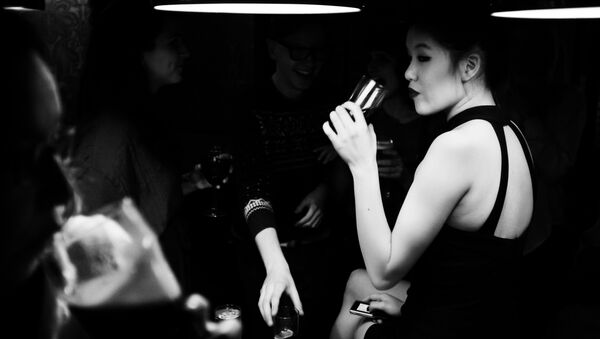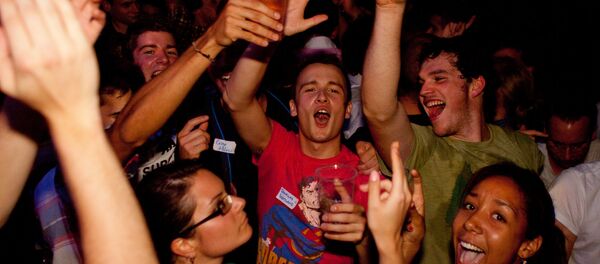Researchers at the Universities of Glasgow and Glasgow Caledonian examined 308 articles on women's and men's drinking habits in national newspapers and online news sites over a two-year period, finding that women who binge drink are much more likely to be portrayed more negatively by the media than men, despite men drinking more in reality.
@Maritta_L no, we have some very strange rules and regulations in the UK. Think that's why the UK leads the world in binge drinking.
— English Cad (@englishcad) December 24, 2016
A key finding was female binge drinkers were commonly associated with behavior marking them as weak or vulnerable and were less able than men to maintain socially acceptable behavior while drunk. Women binge drinkers were presented as helpless, physically incapacitated and transgressive and as burdens to their partners, who were sometimes cast as carers for drunken women.
So what does one night of binge drinking do to your body??? We investigate https://t.co/7XhPHBkYap
— MuscleFood UK (@MuscleFoodUK) December 27, 2016
Moreover, descriptions of binge drinking women's dress had a moralistic tone absent in representations of men, with articles typically focusing on degrees of nudity and implicitly questioning the propriety of women's chosen attire.
The study concludes such presentation could reinforce harmful gender stereotypes by suggesting drinking is more problematic for women than men, and indirectly encourage victim blaming in cases of sexual assaults on women who have imbibed alcohol.
Binge drinking was also characterized as affecting women's physical appearance more than men's. Various harms to complexion were reported in relation to women, including the use of make-up to hide grey skin.
Weight gain caused by alcohol consumption was cited as both a product of alcohol use and a cause of 'drunkorexia,' the practice of eating less to offset calories gained from alcoholic drinks. Drunkorexia was almost exclusively associated with women. As an example, the study cited an article headlined ‘Lambrini ruined my looks in five months' in a national newspaper, which reported how an "attractive" woman had become "a swollen, haggard wreck" with the consumption of an alcoholic drink overtly marketed to young women.
See why Drunkorexia was the 8th most popular search term of 2016 #ClinicalTrendshttps://t.co/cxqq4pm9bn pic.twitter.com/RRZk2AvvXT
— Medscape Psychiatry (@MedscapePsych) December 20, 2016
Despite the concerns raised by the paper, UK alcohol charity Alcohol Concern believes there may be a degree of validity to the focus on female binge drinking, precisely due to the alcohol industry's "concerted effort" to market products and brands specifically to women.
"Since the 1950s we've seen women's drinking continue to rise. Drinking at home has continued to increase, and because alcohol is so cheap and easily available, it's become an everyday grocery item," a spokesperson for Alcohol Concern told Sputnik.
Binge drinking occurs after 4 drinks for women and 5 for men in a two hour time span.
— bingedrk_exp (@bingedrk_exp) December 17, 2016
In conclusion, the study states popular misrepresentations of binge drinking can be harmful in three ways. First, if public audiences' understandings are influenced by media coverage of binge drinking, associations of binge drinking with young women could lead the public to underestimate the health risks of single-episodic drinking among those not typically depicted such narratives, particularly older people.
Second, morally loaded representations of women's binge drinking may reproduce harmful stereotypes and stigma about the vulnerability of drunken women and the social unacceptability of female drunkenness. Finally, media content reinforcing a skewed representation of binge drinking may present a challenge to public health stakeholders seeking to promote evidence-based information, recommendations and policies with the goal of reducing alcohol-related health harms.



